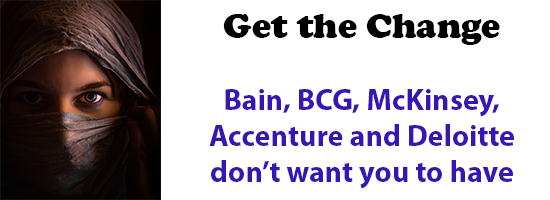These 4 Major Shifts Will Drive The 21st Century

In 1900, most people lived much like their ancestors had for millennia. They lived and worked on farms, using animal power and hand tools to augment their own abilities. They inhabited small communities and rarely, if ever, travelled far from home. They engaged in small scale violence and lived short, hard lives.
That would all change over the next century as we learned to harness the power of internal combustion, electricity and atoms. These advancements allowed us to automate physical labor on a large scale, engage in mass production, travel globally and wage violence that could level entire cities.
Today, at the beginning of a new century, we are seeing similar shifts that are far more powerful and are moving far more quickly. Disruption is no longer seen as merely an event, but a way of life and the fissures are there for all to see. Our future will depend on our determination to solve problems faster than our proclivity to continually create them.
1. Technology Shifts
At the turn of the 20th century, electricity and internal combustion were over a decade old, but hadn’t made much of an impact yet. That would change in the 1920s, as roads got built and new appliances that harnessed the power of electricity were invented. As ecosystems formed around new technologies, productivity growth soared and quality of life increased markedly.
There would be two more major technology shifts over the course of the century. The Green Revolution and the golden age of antibiotics in the 50s and 60s saved an untold number of lives. The digital revolution in the 90s created a new era of communication and media that still reverberates today.
These technological shifts worked for both good and ill in that they revealed the best and worst parts of human nature. Increased mobility helped to bring about violence on a massive scale during two world wars. The digital revolution made war seem almost antiseptic, enabling precision strikes to kill people half a world away at the press of a button.
Today, we are on the brink of a new set of technological shifts that will be more powerful and more pervasive than any we have seen before. The digital revolution is ending, yet new technologies, such as novel computing architectures, artificial intelligence, as well as rapid advancements in genomics and materials science promise to reshape the world as we know it.
2. Resource Shifts
As new technologies reshaped the 20th century, they also reshaped our use of resources. Some of these shifts were subtle, such as how the invention of synthetic indigo dye in Germany affected farmers in India. Yet the biggest resource shift, of course, was the increase in the demand for oil.
The most obvious impact from the rise of oil was how it affected the Middle East. Previously nomadic societies were suddenly awash in money. Within just a single generation, countries like Saudi Arabia, Iraq and Iran became global centers of power. The Arab Oil Embargo of the 1970s nearly brought western societies to their knees and prolonged the existence of the Soviet Union.
So I was more than surprised last year to find when I was at a conference in Bahrain that nearly every official talked openly about he need to “get off oil.†With the rise of renewable energy, depending on a single commodity is no longer a viable way to run a society. Today, solar power is soaring in the Middle East.
Still, resource availability remains a powerful force. As the demand for electric vehicles increases, the supply of lithium could become a serious issue. Already China is threatening to leverage its dominance in rare earth elements in the trade war with the United States. Climate chance and population growth is also making water a scarce resource in many places.
3. Migrational Shifts
One of the most notable shifts in the 20th century was how the improvement in mobility enabled people to “vote with their feet.†Those who faced persecution or impoverishment could, if they dared, sail off to some other place where the prospects were better. These migrational shifts also helped shape the 20th century and will likely do the same in the 21st.
Perhaps the most notable migration in the 20th century was from Europe to the United States. Before World War I, immigrants from Southern and Eastern Europe flooded American shores and the backlash led to the Immigration Act of 1924. Later, the rise of fascism led to another exodus from Europe that included many of its greatest scientists.
It was largely through the efforts of immigrant scientists that the United States was able to develop technologies like the atomic bomb and radar during World War II. Less obvious though is the contributions of second and third generation citizens, who make up a large proportion of the economic and political elite in the US.
Today, the most noteworthy shift is the migration of largely muslim people from war-torn countries into Europe. Much like America in the 1920s, the strains of taking in so many people so quickly has led to a backlash, with nationalist parties making significant gains in many countries.
4. Demographic Shifts
While the first three shifts played strong roles throughout the 20th century, demographic shifts, in many ways, shaped the second half of the century. The post war generation of Baby Boomers repeatedly challenged traditional values and led the charge in political movements such as the struggle for civil rights in the US, the Prague Spring in Czechoslovakia and the March 1968 protests in Poland.
The main drivers of the Baby Boomer’s influence have been its size and economic prosperity. In America alone, 76 million people were born in between 1946 and 1964, and they came of age in the prosperous years of the 1960s. These factors gave them unprecedented political and economic clout that continues to this day.
Yet now, Millennials, who are more diverse and focused on issues such as the environment and tolerance, are beginning to outnumber Baby Boomers. Much like in the 1960s, their increasing influence is driving trends in politics, the economy and the workplace and their values often put them in conflict with the baby boomers.
However, unlike the Baby Boomers, Millennials are coming of age in an era where prosperity seems to be waning. With Baby Boomers retiring and putting further strains on the economy, especially with regard to healthcare costs, tensions are on the rise.
Building On Progress
As Mark Twain is reputed to have said, “History doesn’t repeat itself, but it does rhyme.†While shifts in technology, resources, migration and demographics were spread throughout the 20th century, today we’re experiencing shifts in all four areas at once. Given that the 20th century was rife with massive wars and genocide, that is somewhat worrying.
Many of the disturbing trends around the world, such as the rise of authoritarian and populist movements, global terrorism and cyber warfare, can be attributed to the four shifts. Yet the 20th century was also a time of great progress. Wars became less frequent, life expectancy doubled and poverty fell while quality of life improved dramatically.
So today, while we face seemingly insurmountable challenges, we should also remember that many of the shifts that cause tensions, also give us the power to solve our problems. Advances in genomics and materials science can address climate change and rising healthcare costs. A rising, multicultural generation can unlock creativity and innovation. Migration can move workers to places where they are sorely needed.
The truth is that every disruptive era is not only fraught with danger, but also opportunity. Every generation faces unique challenges and must find the will to solve them. My hope is that we will do the same. The alternative is unthinkable.
Image credit: Pixabay
Wait! Before you go…
Choose how you want the latest innovation content delivered to you:
- Daily — RSS Feed — Email — Twitter — Facebook — Linkedin Today
- Weekly — Email Newsletter — Free Magazine — Linkedin Group
 Greg Satell is a popular author, keynote speaker, and trusted adviser whose new book, Cascades: How to Create a Movement that Drives Transformational Change, will be published by McGraw-Hill in April, 2019. His previous effort, Mapping Innovation, was selected as one of the best business books of 2017. You can learn more about Greg on his website, GregSatell.com and follow him on Twitter @DigitalTonto.
Greg Satell is a popular author, keynote speaker, and trusted adviser whose new book, Cascades: How to Create a Movement that Drives Transformational Change, will be published by McGraw-Hill in April, 2019. His previous effort, Mapping Innovation, was selected as one of the best business books of 2017. You can learn more about Greg on his website, GregSatell.com and follow him on Twitter @DigitalTonto.
NEVER MISS ANOTHER NEWSLETTER!
LATEST BLOGS
Three things you didn’t know about credit cards
Photo by Ales Nesetril on Unsplash Many of us use credit cards regularly. From using them for everyday purchases to…
Read MoreFive CV skills of a business-minded individual
Photo by Scott Graham on Unsplash The skills listed on a CV help employers quickly understand your suitability for a…
Read More


